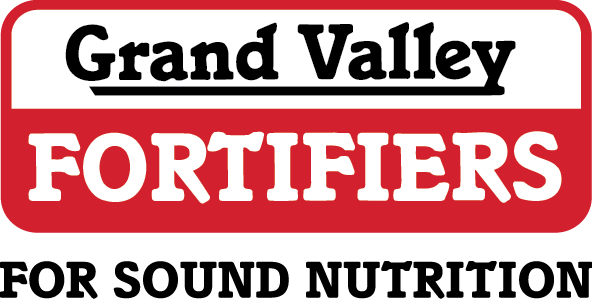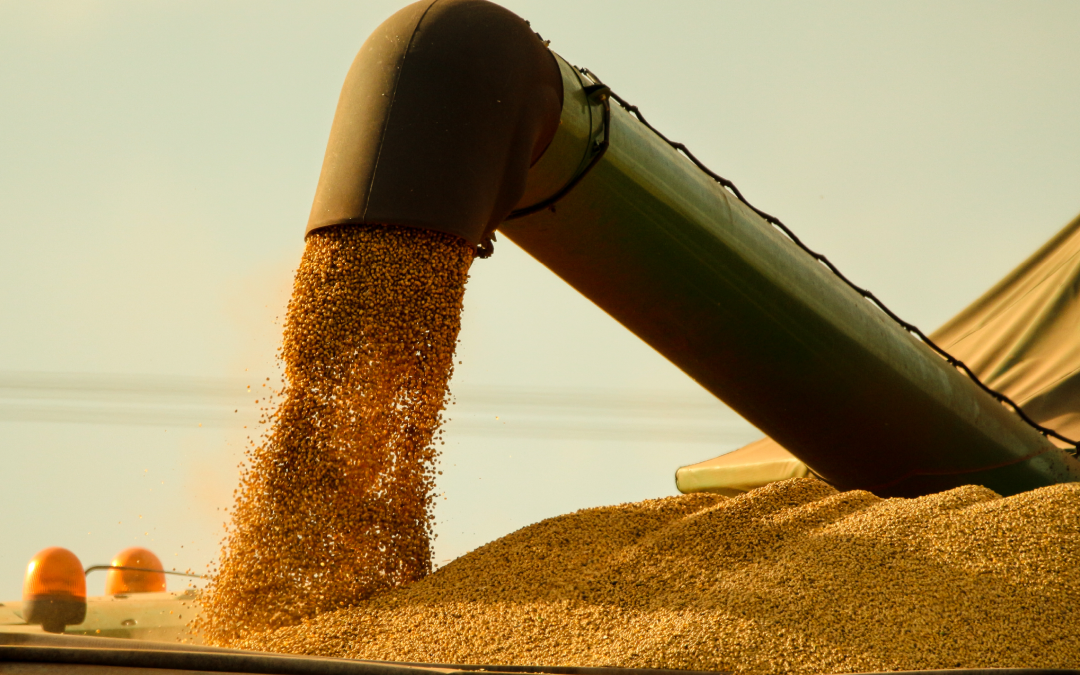Ruminant Nutritionist Manager
Grand Valley Fortifiers
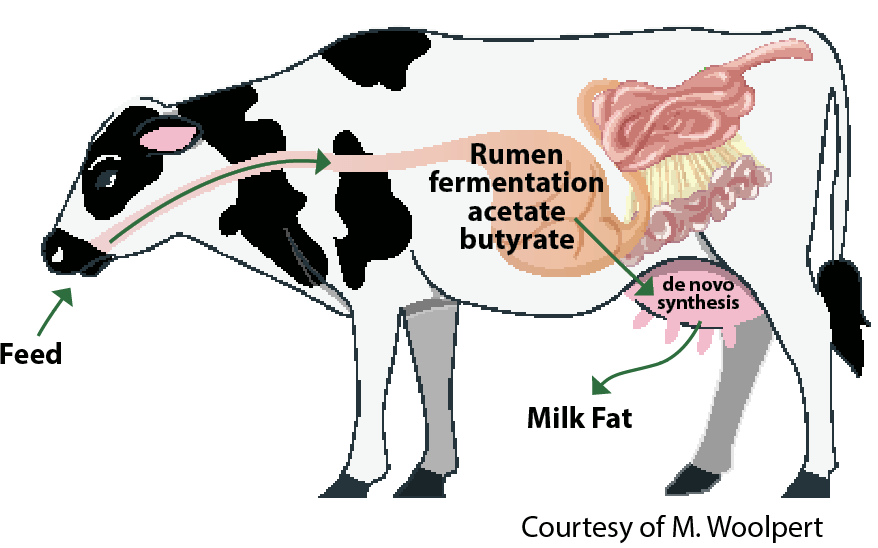
What about fats?
We know that cows are very capable of making fat – these are called de novo and mixed fats. The ones that she needs from the diet are called mixed and preformed fats, and these come from silages, distillers, and any fats or oils added to the ration. Ruminants are programmed to manufacture 80% of their energy needs in the rumen and then the rest is supplied through the diet. These long-chain fatty acids enable the cow to maintain body condition, support reproductive efficiency, growth and development of the calf, and ultimately her needs throughout lactation. That need increases as demands from lactation rise from early stage to peak production. Ideally, the diet and environment help hold and sustain that peak.
High Oleic Soybeans
Roasting the bean to start creates a valuable source of bypass protein – as noted earlier, this allows the rumen to use what it needs and then the rest bypasses to allow the cow to use what she needs. Furthermore, oleic acid is something that is not found in high amounts within corn silages or haylages. It is found in bypass blended fats (commercial names include Golden Flake, Vitali-T, Energy Booster to name just a few) (see Table 1). This will help fuel the cow through preformed fats. Some research does show us a nice, positive effect when cows are fed blended fats in the early stages of lactation to help meet her lactation needs. However, the challenge with palm fat or even feeding too much blended fat, is a cow’s dry matter intake will suffer during early lactation. So, while she continues to milk, she often eats less, digests less efficiently, and eventually hits a wall where her body cannot keep up. Is this new, innovative plant something that can fill that gap?
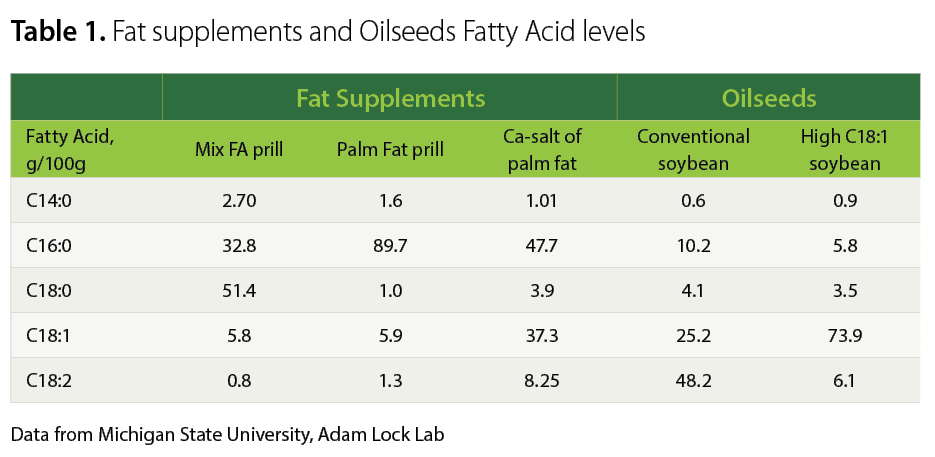
Typical roasted beans are a great feed option and can even serve as a secondary feed through the robot to boost bypass protein and energy needs to fresh and high producing cows. Although, proper roasting is critical to their feeding success. With conventional roasted beans they are highest in Linoleic acid (18:2) and that is also the fatty acid we find in corn silage, barley silage, and processed corn products that retain some oil, such as corn gluten and corn distiller products. Like all well-balanced diets, it is about achieving the right blend of nutrients. With high oleic (18:1) beans, you can feed preformed fatty acids alongside typical corn- or barley-based diets to create a more balanced fatty acid profile. Furthermore, it is believed that oleic acid supply to the small intestine improves fatty acid digestibility, which is especially important for fresh cows. This is an area that Academics are just starting to explore to better understand the role high oleic beans can play in a dairy ration when properly cooked.
The Research
A trial done by Bales and Lock in 2024 registered 24 mature cows over four 21- day periods with an average milk production of 50.7 kg/d and an average days in milk of 122 days. The level of high oleic beans provided in the ration was one of the following 4 treatments: 0%, 8%, 16%, or 24% inclusion. Figure 1 demonstrates the outcome as it relates to dry matter intake (keeping in mind that often higher inclusion of dietary fats leads to lower dry matter intake in dairy cows).
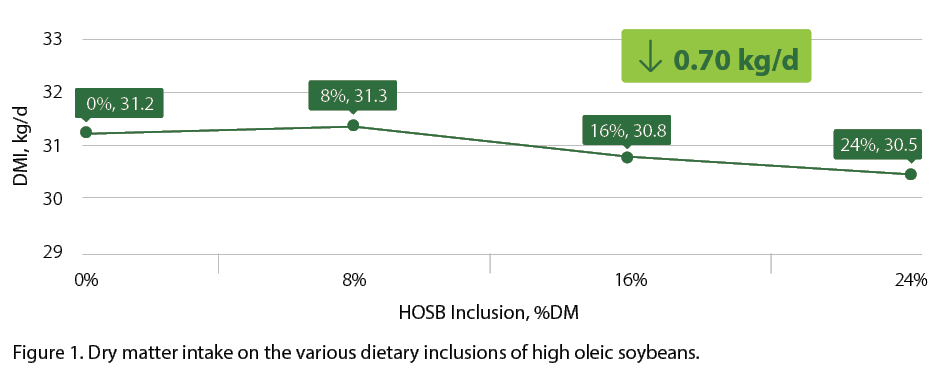
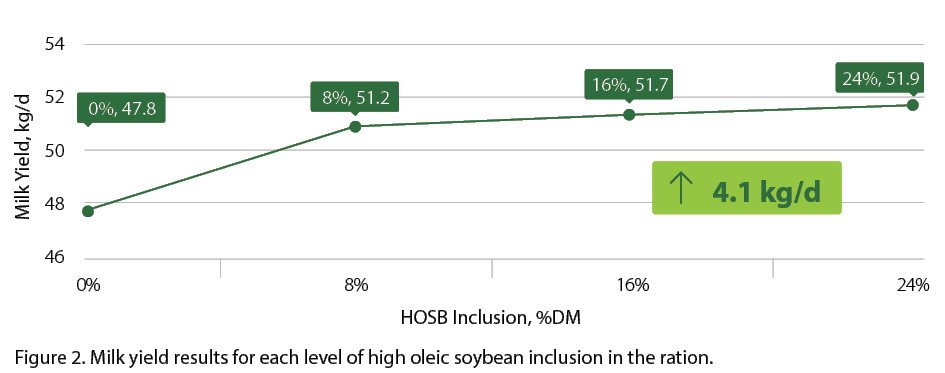
Overall, this is an exciting new ingredient that still requires some more data to be confident in its inclusion in dairy rations. However, early research and the growing understanding of fatty acid and protein nutrition, makes high oleic beans worth exploring!
This article was written for the Summer 2025 Dairy Grist. To read the whole Dairy Grist, click the button below.
This article was also written for the Summer 2025 Western Dairy Grist. To read the whole Western Dairy Grist, click the button below.
